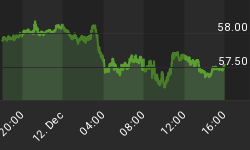When the stock market collapsed in 2008 and 2009 it seemed that the carnage was indiscriminate. Most stocks' correlations went to nearly 1.0 and it seemed there was nowhere to hide. But it pays to dig deeper and look at companies that held up well during the worst downturn since the Great Depression. It turns out that many of these companies have stable growth, low debt, and relatively high dividends. Let's take a look at a few of them relative to what the S&P 500 did from the peak in 2007 to the trough in 2009.
| Company | 2007 Peak Price | 2009 Trough Price | % Change | Total Debt/Equity | Dividend Yield |
| S&P 500 | 1,562.00 | 683.00 | -56% | 80% | 1.89% |
| Johnson & Johnson (JNJ) | 67.76 | 47.97 | -29% | 21% | 3.50% |
| Exxon (XOM) | 95.00 | 62.36 | -34% | 13% | 2.50% |
| Procter & Gamble (PG) | 65.00 | 48.17 | -26% | 52% | 3.10% |
| VF Corporation (VFC) | 94.13 | 50.02 | -47% | 25% | 3.00% |
| Sysco Corporation (SYY) | 36.76 | 21.50 | -42% | 63% | 3.60% |
| Coca Cola Corporation (KO) | 63.81 | 39.10 | -39% | 48% | 2.70% |
There are several interesting things to note here. First, the companies generally produce things that people need or use as staple items such as food, energy, household products, basic clothing and pharmaceuticals. Second, these are well established, stable cash flow companies. Third, relative to their peers in the S&P 500 these companies have low levels of debt. And lastly, these companies have higher dividend yields than their peers.
Let's also take a look at the correlations between these companies and the S&P 500. I also included a few other indices vs. the S&P 500. I ran the correlations over the last decade (12/1/2001-12/1/2010). This time frame captures part of the downturn after the tech bubble burst as well as the entire boom/bust credit cycle afterward.
| Correlations of S&P 500 to: | ||||
| Russell 2000 | 0.90 | P&G | 0.58 | |
| Dow Industrials | 0.99 | VFC | 0.59 | |
| Vanguard Emerg Markets | 0.65 | Sysco | 0.63 | |
| J&J | 0.53 | Coke | 0.33 | |
| Exxon | 0.56 | |||
What are the above correlations telling us? For one, there is very little diversification benefit among the S&P 500, the Russell 2000, and the Dow Jones Industrials. However, even though emerging markets funds collapsed along with nearly all stock indices in 2008, the correlation is still a reasonably low value of 0.65. But let's look at the selected low debt, high dividend yield companies. Every one of them has a lower correlation with the S&P 500 compared with any of the indices, even emerging markets.
There are several benefits to investing in companies such as the ones I've highlighted. One is better diversification. As most investors know, the lower the correlation between two investments the better the diversification. And the better the diversification, the more return you get per unit of risk. Another benefit is quite simply the high dividend payouts. With the U.S. stock market having returned just about 0% over the last decade it is at least a small victory when you see those dividend payments coming in every quarter. Also, these companies have stable, strong cash flows which indicates there is less danger that they will reduce their dividends any time soon. The last benefit may be the most important. The collapse in the stock market and economy that occurred in 2008 was due to the massive credit bubble bursting. Companies with high debt loads were rightfully punished by the markets. Only a whole host of bailouts and Federal Reserve programs saved many of these debt-laden companies. Most of these companies (and our government) are now even more leveraged than before. If and when the next credit-related downturn occurs, you can feel much safer in stocks such as these and collect your nice dividend checks along the way.
















